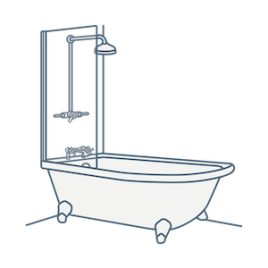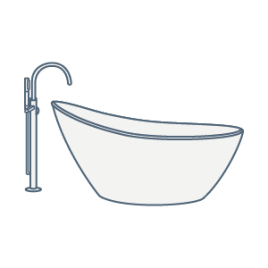Freestanding Baths
The very essence of luxury and comfort comes in the form of the much sought-after freestanding bath, which offers both style, Instagrammable appeal, and comfort for not only a stand out feature that is the envy of visitors but also provides a sumptuous relaxing soak to sink back into. Also known as Stand Alone Baths, a freestanding bath is essentially one that can be installed across the space making them a true centrepiece item as part of any bathroom redesign. There are many styles to choose from including everything from those traditional freestanding baths at home in period spaces with feet and legs, including the sought-after clawfoot tubs, or modern, contemporary freestanding baths with elegant, smooth edges or curves.
Browse through our collection below to find the perfect one for your home. Small or large, white or one in a painted finish, there is a fantastic selection to pick from for a variety of budgets, all made from quality materials and from reputable manufacturers.



